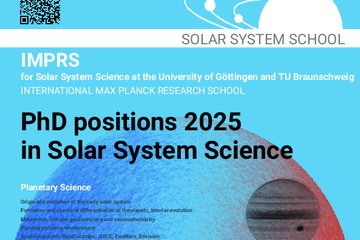All genres
61.
Talk
Axi- to nonaxisymmetric dynamo transition in semi-global convection models. 14th Potsdam Thinkshop: Stellar magnetism: Challenges, Connections and Prospects, Potsdam, Germany (2017)
62.
Talk
The influence of rotation in the transition from axi- to nonaxisymmetric dynamos. Rocks \& Stars II, Göttingen, Germany (2017)
63.
Talk
Axi- to nonaxisymmetric dynamo transition in stellar models with varying rotation rate. AG2017 The many Scales of Universe: Galaxies, theirs Suns and their Planets, Göttingen, Germany (2017)
64.
Talk
Understanding dynamo mechanisms from 3D convection simulations of the Sun. SOLARNET IV Meeting: The Physics of the Sun from the Interior to the Outer Atmosphere., Lanzarote, Spain (2017)
65.
Talk
Identifying dynamo mechanism for slowly and rapidly rotating stars. 14th Potsdam Thinkshop: Stellar Magnetism: Challenges, Connections, and Prospects, Potsdam, Germany (2017)
66.
Talk
Determine dynamo mechanisms and magnetic helicity fluxes in compressible convective dynamo simulations of solar-like stars. 2nd Conference on Natural Dynamos, Valtice, Czech Republic (2017)
67.
Talk
From solar to stellar dynamos combining observations and modelling. MHD Days, Göttingen, Germany (2016)
68.
Talk
Interaction of MRI and other sources of turbulence and what does it mean for galactic dynamo. Max Planck Princeton Center for Plasma Physics Meeting, Princeton, USA (2016)
69.
Talk
The Test-Field Method and Its Applications. ax Planck Princeton Center for Plasma Physics Meeting, Princeton, USA (2016)
70.
Talk
Understanding dynamo mechanisms from 3D convection simulations of the Sun. MHD Days, Göttingen, Germany (2016)
71.
Poster
Solar-like stars at various rotation rates: a comparison between observations and simulations. IAU Symposia 340: Long-term datasets for the understanding of solar and stellar magnetic cycles, Jaipur, India (2018)
72.
Poster
From periods to cycles: new methods applied to solar, stellar and in silico data. Physics Days 2017, the 51st annual meeting of the Finnish Physical Society, Helsinki, Finland (2017)
73.
Poster
Studying the transition from axi- to nonaxisymmetric dynamos using semi-global convection models. MHD Days , Göttingen, Germany (2016)











